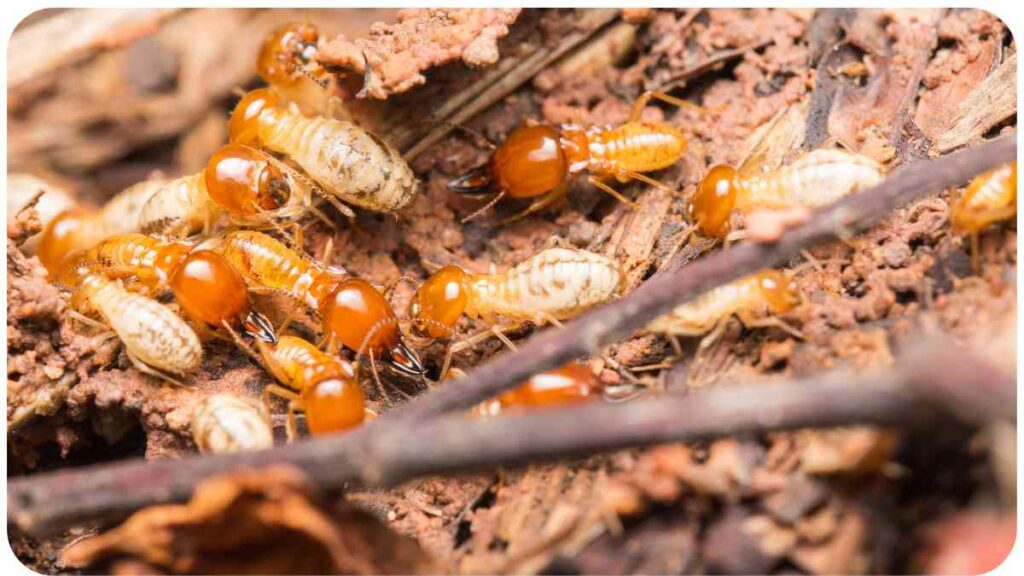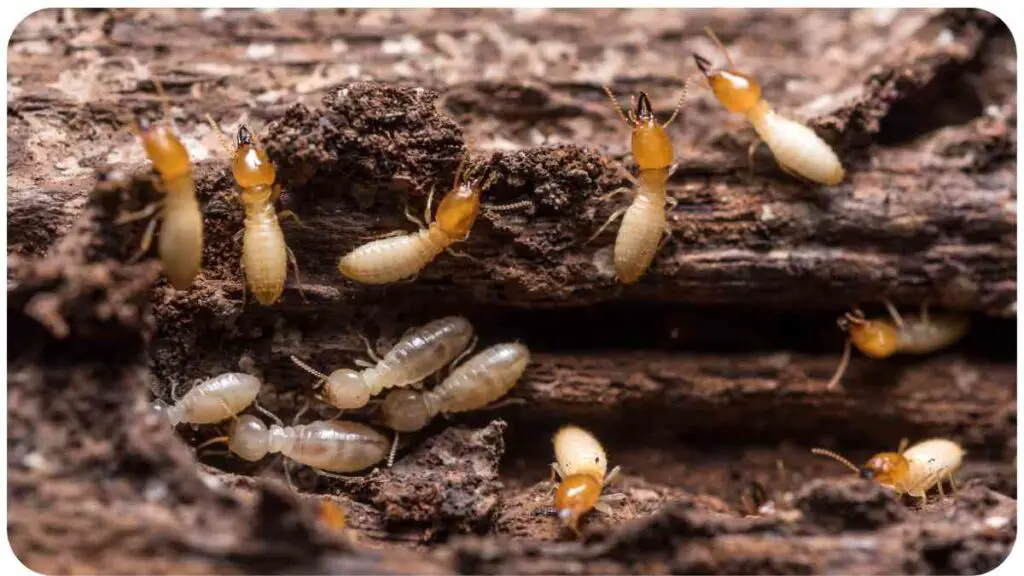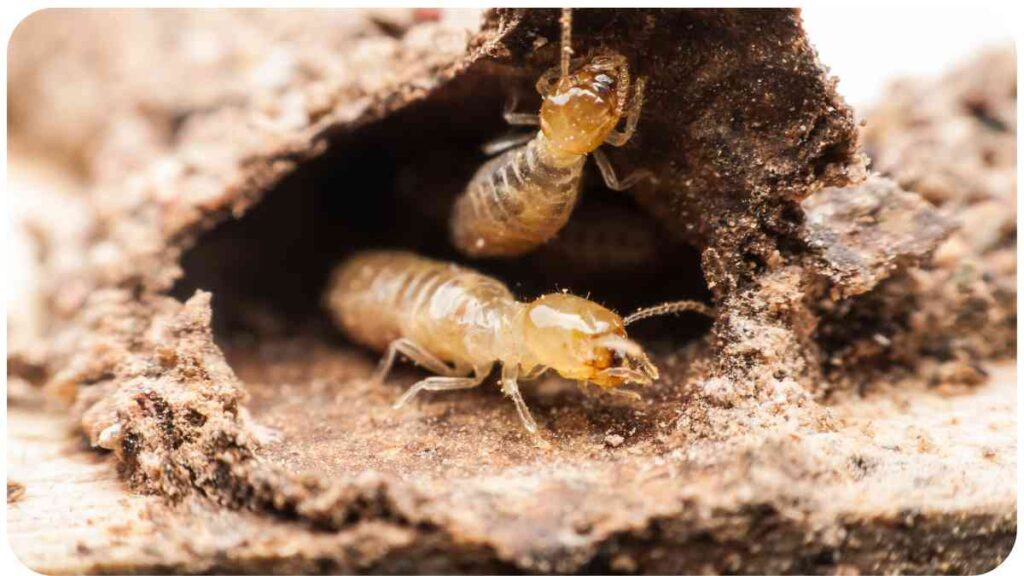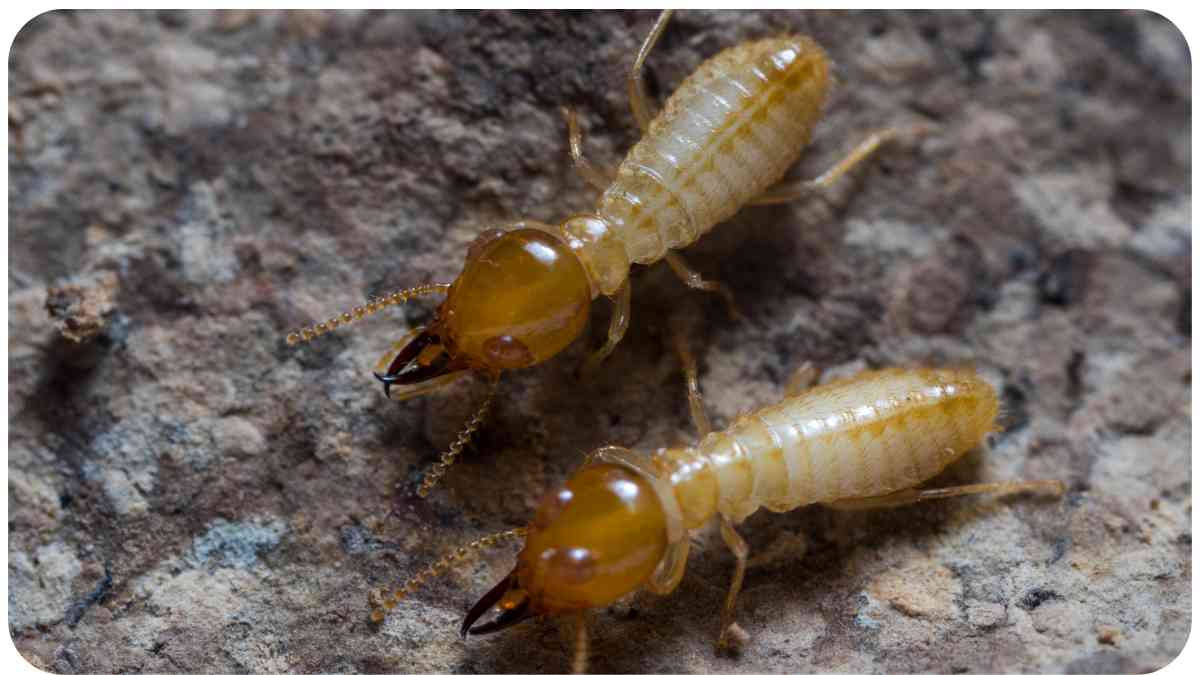Welcome to the world of furniture and the hidden threat of termites. In this comprehensive guide, we’ll delve deep into understanding, identifying, and eliminating these relentless wood-destroying pests. As a seasoned expert in pest control with years of hands-on experience, I’ll be your trusted companion in this journey. Let’s get started.
2. The Silent Destroyers: Who Are Termites?
Termites are tiny, but their destructive power is colossal. Here, I’ll explain the different types of termites you might encounter, shedding light on their secretive lives and habits.
When dealing with pests, it’s crucial to be vigilant. Look for signs like discarded cockroach exoskeletons and a musty odor. These early warning signs of a cockroach infestation can help you take action promptly
Table 1: Types of Termites
| Type | Characteristics |
| Subterranean | Live in colonies underground |
| Drywood | Infest dry wood and require minimal moisture |
| Dampwood | Thrive in damp conditions like decaying wood |
| Formosan | Extremely aggressive and invasive |
| Conehead (Nasutitermes) | Identified by their cone-shaped heads |
3. Signs of Termite Infestation in Furniture

Before we can fight termites, we must first know how to spot them. Let’s explore the telltale signs that your furniture may be harboring these silent invaders.
Table 2: Signs of Termite Infestation
| Sign | Description |
| Hollow Sound | Tap the wood – a hollow sound indicates damage |
| Discarded Wings | Find discarded wings near wooden furniture |
| Mud Tubes | Subterranean termites build mud tunnels |
| Frass (Termite Droppings) | Tiny pellets resembling sawdust |
4. The Dangers of Termites in Furniture
Understanding the potential harm termites can cause is crucial. Let’s examine the risks associated with allowing termites to thrive in your furniture.
Table 3: Potential Risks of Termite-Infested Furniture
| Risk | Consequences |
| Structural Damage | Weakens furniture, risking collapse |
| Financial Loss | Diminishes the value of affected pieces |
| Health Concerns | Termites may exacerbate allergies and asthma |
| Contagion | Infestations can spread to nearby wooden items |
5. How to Prevent Termite Infestations
Prevention is often the best course of action. Let’s delve into strategies for keeping termites at bay.
Ants can be persistent invaders. Understanding the signs of an ant infestation is essential for effective control. Keep an eye out for trails and nests in your home to address the issue efficiently.
Table 4: Preventive Measures Against Termites
| Prevention Method | Description |
| Regular Inspections | Routinely check furniture for signs of termites |
| Moisture Control | Maintain dry conditions to deter termites |
| Proper Storage | Elevate furniture off the ground |
| Wooden Furniture Choices | Opt for termite-resistant wood types |
6. Identifying the Type of Termites

Knowing your enemy is essential in pest control. Let’s explore how to differentiate between termite species, aiding in their eradication.
Table 5: Identifying Termite Types
| Feature | Subterranean Termites | Drywood Termites | Dampwood Termites | Formosan Termites | Conehead Termites |
| Location | Underground colonies | Dry wood | Damp wood | Invading species | Cone-shaped heads |
| Infestation Signs | Mud tubes, frass | Pellet-shaped frass | Faecal pellets | Aggressive damage | Cone-shaped heads |
| Preferred Habitat | Moist soil | Dry, sound wood | Damp, decaying wood | Diverse habitats | Varied environments |
7. DIY Methods for Eliminating Termites
Taking matters into your own hands can be effective if done correctly. Here, we’ll explore several DIY methods for termite elimination.
Have you ever wondered why mothballs don’t work as expected? Explore alternative solutions and learn how to protect your clothes from pests with this guide on ‘Why Aren’t Your Mothballs Working?’.
Table 6: DIY Termite Elimination Methods
| Method | Description |
| Exposing to Sunlight | Termites are sensitive to UV rays |
| Using Nematodes | Beneficial nematodes prey on termite larvae |
| Orange Oil Treatment | Orange oil contains compounds toxic to termites |
| Boric Acid | A natural insecticide that is toxic to termites |
7.1. Exposing Termites to Sunlight
Sunlight can be a formidable weapon against termites. Let’s discuss how to use this method effectively.
Table 7: Steps to Expose Termites to Sunlight
| Step | Description |
| 1 | Identify infested areas |
| 2 | Move furniture outdoors |
| 3 | Direct sunlight on infested parts |
| 4 | Monitor termite activity |
| 5 | Repeat if necessary |
7.2. Using Nematodes
Beneficial nematodes are nature’s pest controllers. Let’s explore how they can help eliminate termites from your furniture.
Table 8: Steps to Use Nematodes for Termite Control
| Step | Description |
| 1 | Purchase nematodes |
| 2 | Mix with water and apply to infested areas |
| 3 | Keep soil moist for nematodes to thrive |
| 4 | Monitor termite population reduction |
| 5 | Reapply if necessary |
7.3. Orange Oil Treatment
Orange oil is a natural termite repellent. Let’s see how it can be used effectively.
Struggling with bed bugs? Discover the reasons behind treatment failures and get insights into why your bed bug treatments might not be working. Implement effective strategies to eliminate these stubborn pests.
Table 9: Steps for Orange Oil Treatment
| Step | Description |
| 1 | Purchase pure orange oil |
| 2 | Drill holes into termite galleries |
| 3 | Inject orange oil into the holes |
| 4 | Seal holes securely |
| 5 | Repeat if required |
7.4. Boric Acid
Boric acid is another natural remedy for termites. Let’s explore how it can be used.
Table 10: Steps for Using Boric Acid
| Step | Description |
| 1 | Mix boric acid with water |
| 2 | Apply the solution to infested wood |
| 3 | Allow it to penetrate the wood |
| 4 | Monitor termite activity |
| 5 | Reapply if necessary |
8. When to Call a Professional Exterminator
While DIY methods can be effective, there are times when it’s best to leave the job to the experts. Let’s discuss when it’s crucial to call a professional exterminator.
Table 11: Signs to Call a Professional Exterminator
| Sign | Description |
| Extensive Damage | Severe structural or cosmetic damage |
| Multiple Colonies | Presence of multiple termite colonies |
| Uncertain Identification | Difficulty in identifying termite species |
| Failed DIY Attempts | Ineffectiveness of previous DIY treatments |
| Time Constraints | Urgent need for termite removal |
9. Safeguarding Your Furniture After Termite Removal
Once you’ve successfully eliminated termites, it’s crucial to prevent a recurrence. Let’s explore how to safeguard your furniture.
Pet owners, beware of flea infestations! Learn about recognizing and addressing the issue of flea infestations in pets. Protect your furry friends and home from these troublesome parasites with expert advice
Table 12: Post-Termite Removal Safeguards
| Safeguarding Measure | Description |
| Regular Inspections | Continue checking for termite signs |
| Moisture Control | Maintain dry conditions to deter termites |
| Wood Sealing and Varnishing | Protect wood surfaces from future infestations |
| Termite-Resistant Wood | Consider using termite-resistant wood for repairs |
10. Natural Repellents for Termites

Nature provides us with several options for termite repellents. Let’s explore some natural alternatives.
Table 13: Natural Termite Repellents
| Natural Repellent | Description |
| Diatomaceous Earth | A non-toxic, abrasive powder that damages termites |
| Vinegar | Creates an acidic environment intolerable to termites |
| Essential Oils | Oils like cedarwood and neem can repel termites |
| Cardboard Traps | Attracts and traps termites for easy removal |
11. Maintaining Termite-Free Furniture
Prevention and maintenance go hand in hand. Let’s discuss how to ensure your furniture remains termite-free.
Table 14: Maintenance Tips for Termite-Free Furniture
| Maintenance Tip | Description |
| Regular Cleaning | Keep furniture clean to spot any new infestations |
| Annual Inspections | Schedule professional inspections for peace of mind |
| Repair Promptly | Fix any damages or cracks in furniture immediately |
| Proper Storage | Elevate and store wooden items appropriately |
12. Common Myths About Termites
It’s important to dispel myths and misconceptions about termites. Let’s uncover some common myths and provide accurate information.
Table 15: Debunking Common Termite Myths
| Myth | Fact |
| Myth: Termites only infest old homes. | Fact: Termites can infest new and old homes. |
| Myth: Termites are visible to the naked eye. | Fact: Most termites are tiny and not easily seen. |
| Myth: Termites only eat wood. | Fact: Termites can damage paper, books, and more. |
| Myth: Termite infestations are always obvious. | Fact: Termites often remain hidden until severe damage. |
Conclusion
In conclusion, termites in furniture can be a nightmare, but armed with knowledge and the right strategies, you can protect your beloved wooden pieces. From identifying termite types to DIY methods and preventive measures, this guide has covered it all. Remember, regular inspections and maintenance are your allies in keeping termites at bay. Don’t let these silent destroyers ruin your cherished furniture – take action today.
If you found this guide helpful, please share it with others, so they too can safeguard their furniture from these pesky invaders.
Further Reading
- How to Get Rid of Termites in Wooden Furniture: Explore detailed tips and methods for eliminating termites from wooden furniture.
- How to Get Rid of Termites in Furniture Naturally and Easily: Learn about natural and easy ways to tackle termite infestations in your furniture.
- Ways to Get Rid of Termites in Wooden Furniture: Discover various methods and solutions for eliminating termites from your wooden furniture.
FAQs
Are termites only attracted to old wooden furniture?
No, termites can infest both old and new wooden furniture.
How can I prevent termites in antique wooden furniture?
Regular inspections and treatment can help prevent termite infestations in antique furniture.
Can termites return after treatment?
Yes, termites can return if proper precautions aren’t taken after treatment.
Do termites only damage wood?
No, termites can damage various materials, including paper and books.
Are termites visible to the naked eye?
Most termites are tiny and not easily visible without magnification.

Hello! I’m Hellen James, and I write about how to keep pests from invading your home. For the last 10 years, I’ve been working in pest control and am excited to share my expertise with you!


